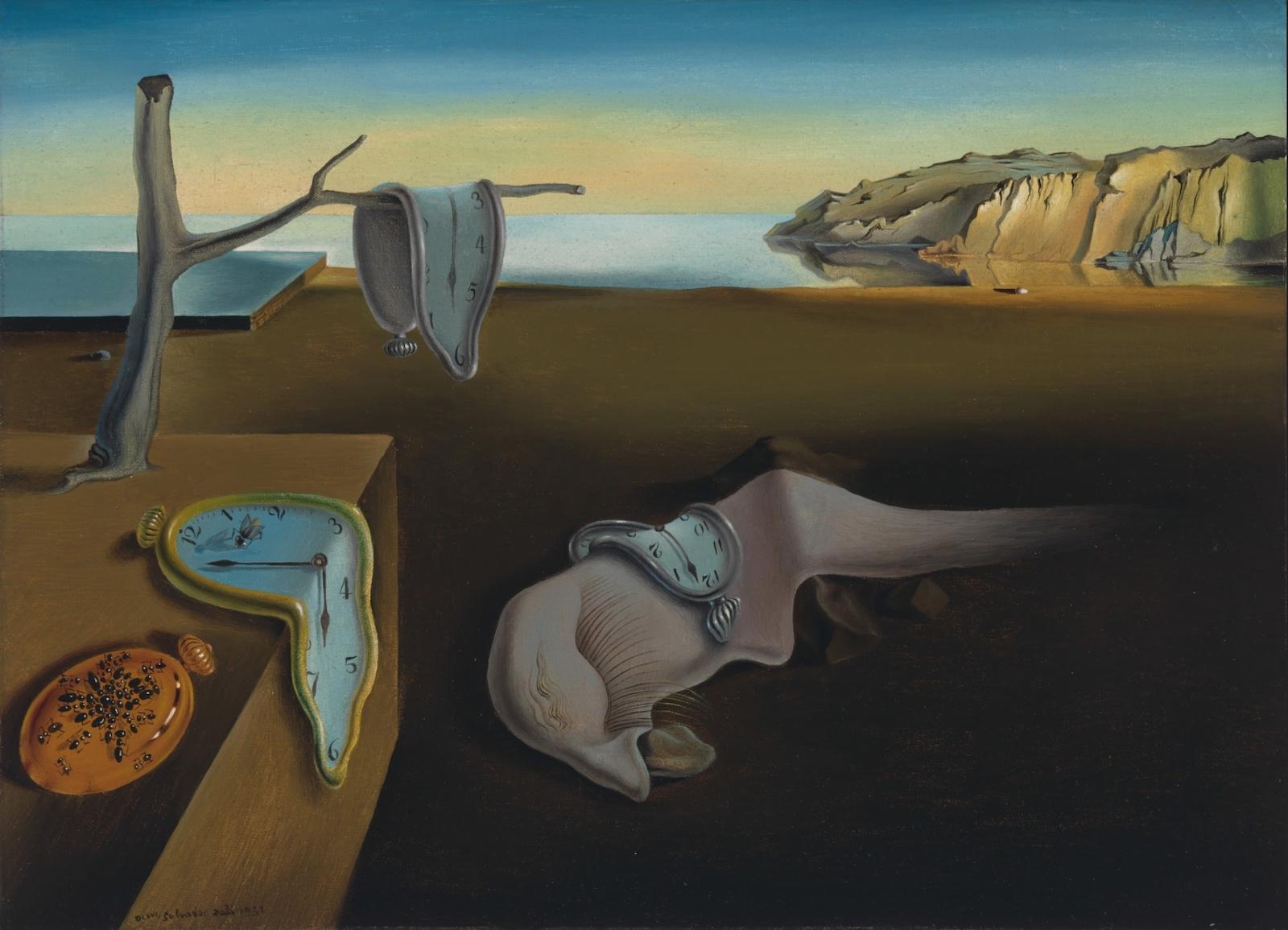One of Dalí’s earliest Surrealist paintings, it was inspired by the work of Hieronymus Bosch and Giorgio de Chirico and Dalí is said to have mined his own psychological conflicts and phobias for artistic inspiration.
The painting is an excellent example of Dalí’s obsession with juxtaposing hard and soft qualities such as the sharply rendered cliffs of the Catalonian coast contrasted with the softly oozing clocks. One clock hangs limply from an apparently dead olive tree branch, another slides down the edge of a block-like structure and yet another flops over the cheekbones of the monstrous humanoid organism (which may or may not be Dalí’s self-portrait), which is itself draped over a rocky outcropping, creating a sense of unreality, capturing how dreams can feel both anchored and fluid.
According to Dalí, who used what he called the “paranoiac critical method” whereby he deliberately induced hallucinations to access his subconscious, the clocks were inspired by visions he had after eating Camembert cheese.

























![DEl Kathryn Barton [Australian b. 1972] the more than human love , 2025 Acrylic on French linen 78 3/4 x 137 3/4 inches 200 x 350 cm Framed dimensions: 79 7/8 x 139 inches 203 x 353 cm](/sites/default/files/styles/image_5_column/public/ab15211bartonthe-more-human-lovelg.jpg?itok=wW_Qrve3)



